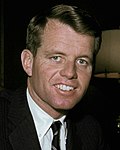
The 1964 United States Senate elections were held on November 3. The 33 seats of Class 1 were contested in regular elections. Special elections were also held to fill vacancies. They coincided with the election of President Lyndon B. Johnson by an overwhelming majority, to a full term. His Democratic Party picked up a net two seats from the Republicans. As of 2023, this was the last time either party has had a two-thirds majority in the Senate, which would have hypothetically allowed the Senate Democrats to override a veto, propose constitutional amendments, or convict and expel certain officials without any votes from Senate Republicans. In practice, however, internal divisions effectively prevented the Democrats from doing so. The Senate election cycle coincided with Democratic gains in the House in the same year.

The 1958 New York state election was held on November 4, 1958, to elect the governor, the lieutenant governor, the state comptroller, the attorney general, a judge of the New York Court of Appeals and a U.S. Senator, as well as all members of the New York State Assembly and the New York State Senate.

The 1974 New York state election was held on November 5, 1974, to elect the governor, the lieutenant governor, the state comptroller, the attorney general, two judges of the New York Court of Appeals and a U.S. Senator, as well as all members of the New York State Assembly and the New York State Senate.

The 1970 New York state election was held on November 3, 1970, to elect the governor, the lieutenant governor, the state comptroller, the attorney general and a U.S. Senator, as well as all members of the New York State Assembly and the New York State Senate.

The 1966 New York state election was held on November 8, 1966, to elect the governor, the lieutenant governor, the state comptroller, the attorney general and the Chief Judge of the New York Court of Appeals, as well as all members of the New York State Assembly and the New York State Senate. Besides, 15 delegates-at-large to the New York State Constitutional Convention of 1967 were elected on the state ticket, and three delegates each in the 57 senatorial districts.
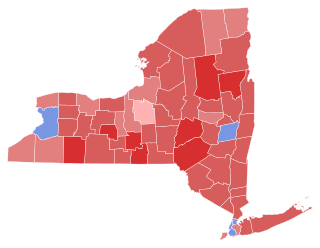
The 1962 New York state election was held on November 6, 1962, to elect the governor, the lieutenant governor, the state comptroller, the attorney general, a judge of the New York Court of Appeals and a U.S. Senator, as well as all members of the New York State Assembly and the New York State Senate.
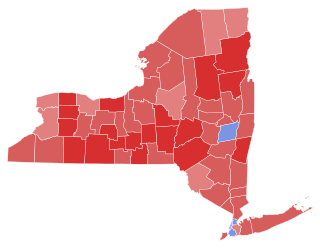
The 1950 New York state election was held on November 7, 1950, to elect the governor, the lieutenant governor, the state comptroller, the attorney general and a U.S. Senator, as well as all members of the New York State Assembly and the New York State Senate.
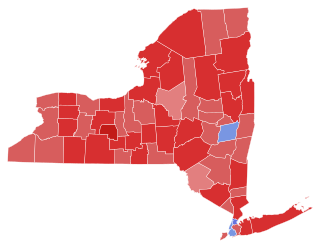
The 1946 New York state election was held on November 5, 1946, to elect the governor, the lieutenant governor, the state comptroller, the attorney general, a U.S. Senator, the chief judge and an associate judge of the New York Court of Appeals, as well as all members of the New York State Assembly and the New York State Senate.

The 1936 New York state election was held on November 3, 1936, to elect the governor, the lieutenant governor, the state comptroller, the attorney general, a judge of the New York Court of Appeals and two U.S. Representatives-at-large, as well as all members of the New York State Assembly and the New York State Senate.

The 1934 New York state election was held on November 6, 1934, to elect the governor, the lieutenant governor, the state comptroller, the attorney general, a U.S. Senator, two U.S. Representatives-at-large, the chief judge and two associate judges of the New York Court of Appeals, as well as all members of the New York State Assembly and the New York State Senate.
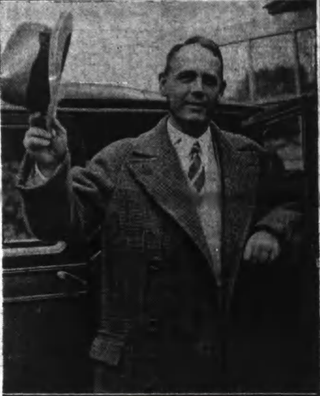
The 1930 New York state election was held on November 4, 1930, to elect the governor, the lieutenant governor, the state comptroller, the attorney general and a judge of the New York Court of Appeals, as well as all members of the New York State Assembly and the New York State Senate.

The 1926 New York state election was held on November 2, 1926, to elect the governor, the lieutenant governor, the state comptroller, the attorney general, a U.S. Senator, the chief judge and an associate judge of the New York Court of Appeals, as well as all members of the New York State Assembly and the New York State Senate. A referendum to repeal Prohibition was also proposed and accepted by a very large majority.

The 1964 New York state election was held on November 3, 1964, to elect a U.S. Senator from New York, as well as all members of the New York State Assembly and the New York State Senate.

The 1944 New York state election was held on November 7, 1944, to elect a judge of the New York Court of Appeals and a U.S. senator, as well as all members of the New York State Assembly and the New York State Senate.

The 1952 United States Senate election in New York was held on November 4. Incumbent Republican Senator Irving M. Ives was re-elected to a second term in office over Democrat John Cashmore with a then-record margin of victory.

The United States Senate election of 1956 in New York was held on November 6, 1956. Incumbent Senator Herbert H. Lehman retired after one term in the Senate. Republican Attorney General of New York Jacob K. Javits defeated Mayor of New York City Robert F. Wagner Jr. to win the open seat.

The 1968 New York state election was held on November 5, 1968, to elect a judge of the New York Court of Appeals and a U.S. Senator, as well as all members of the New York State Assembly and the New York State Senate.

The 175th New York State Legislature, consisting of the New York State Senate and the New York State Assembly, met from January 6 to June 23, 1965, during the seventh year of Nelson Rockefeller's governorship, in Albany.

The 176th New York State Legislature, consisting of the New York State Senate and the New York State Assembly, met from January 5 to July 6, 1966, during the eighth year of Nelson Rockefeller's governorship, in Albany.

The 177th New York State Legislature, consisting of the New York State Senate and the New York State Assembly, met from January 4, 1967, to May 25, 1968, during the ninth and tenth years of Nelson Rockefeller's governorship, in Albany.

